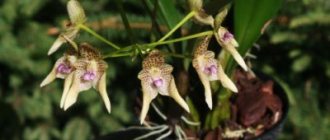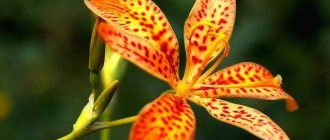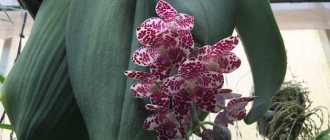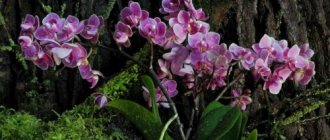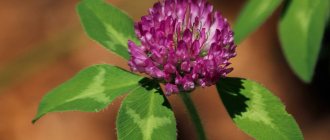The popularity of exotic flowers is gaining momentum. Orchids attract the attention of not only experienced flower growers and breeders, but also beginners.
There are legends and myths about the birth of this amazing flower, which are passed from mouth to mouth and maintain the mystery of the plant. In the wild, orchids live in the most unusual places : in the tropics - on trees, in the mountains - on rocks and limestone, there are even underground species. Their unusual appearance, sometimes terrifying, inspired fear in ancient times.
Some species actually belong to predatory representatives. Now the most unusual shapes and colors of orchids are a decoration for any home flower collection.
The exotic nature of its growth and image gave rise to the myth about the capricious nature of an exotic flower . In fact, at home, an orchid requires minimal care, but with a strict regime .
Orchid roots are adapted to the most unfavorable conditions: drought, humidity, heat and coolness. In the tropics the climate is unpredictable.
We will tell you about the varieties of orchids: Angrekum, Ascocenda, Bulbophyllum, Gulu, which develop well at home and bloom all year round.
Angrekum
In the Orchid family there is the genus Angraecum, which has about 200 species. Madagascar and African forests and the islands of the Indian Ocean are considered their homeland.
Epiphytes found a warm, shady, windless place to live under the treetops.
Bulbs are not formed on angrecums ; the stem is erect, on which long leaves of a dark green color with a waxy coating grow in two directions.
Angrecum shoots a peduncle with 1-8 buds from the leaf axils.
Due to the shape of its flowers, angrecum is sometimes called “Star” or “Comet”. The petals are pointed and the sepals are widely spread to the sides. The lip is short and wide. The long spur resembles the tail of a comet.
itself is of medium size (3-10 cm in diameter) , in some species up to 20 cm in diameter. The color of the inflorescences is pastel colors : white, cream, greenish. Yellow and orange angrecums are extremely rare.
The flowering period of angrecums is not strictly fixed; it can bloom in the winter months . The aroma of the flower, which intensifies at night, is reminiscent of cinnamon .
Common types of angrecum in home keeping:
- Magdalena;
- One and a half feet.
Angrekum (photo of Magdalena species).
Angrekum one and a half feet.
Both species do not require a dormant period and can bloom throughout the year.
Advice! Experienced flower growers, after active flowering, remove the peduncle once a year and rest the plant for 10 days without watering or fertilizing.
Big Lip varieties
Experienced flower growers distinguish the Big Lip hybrid from other phalaenopsis by the shape of the middle petals; this is their common feature. But it also has several interesting varieties.
Leontin
The petals of this variety of Big Lip are light in color - white with light shades, soft lilac. A special feature is the presence of teeth in the lower part of the lip.
Melody
The variety attracts attention with its rich colors: on the main pinkish background, bright purple, burgundy, and cherry veins are drawn, intertwined into beautiful patterns.
Multiflora (Multiflora)
This name includes a large number of hybrids with different colors of petals from bright yellow to light, almost white with pronounced veins. The size of flowers, as a rule, does not exceed 6 cm.
Yellow
The very name Big Lip Yellow speaks of the sunny shades of the flowers - from delicate, almost beige to fiery.
Splash
The petals of this variety are painted in two colors: the lips in the middle are bright lilac, and the outer circle is very light, almost white.
PrincessSakura (Princess Sakura)
The variety got its name due to its coloring, similar to Japanese cherry blossoms. Its buds and flowers are very delicate, in all shades of pink.
There are other varieties, with no less impressive descriptions of external characteristics, for example: Big Ben, Big Bang, Lightning.
Ascocenda
Among orchids, there is a genus of epiphytes called Ascocenda. The origin of the genus is not natural, but artificial : by crossing several species of Ascocentrum and Vanda, about 1,500 interspecific hybrids were obtained.
Monopodial plant with one vertical stem on which vaginal, alternate, succulent leaves are formed. The leaves are similar to vandaceae: belt-shaped with a central vein and a forked tip.
The roots of Ascocenda are covered with velamen, a porous substance that retains the amount of moisture necessary for the flower, obtained from the surrounding atmosphere.
Ascocenda blooms all winter , from September to May. 12-25 flowers appear on the plant .
themselves are relatively large (5-8 cm in diameter) with a simple orchid shape, reminiscent of a pansy. Various colors:
- purple;
- red;
- yellow;
- orange.
Variety of Ascocenda.
The Ascocenda orchid develops well fixed in blocks, which are collected from:
- a piece of pine bark;
- coconut fiber;
- fern roots;
- sphagnum;
- thin layer of moss.
The block is fixed vertically on the wall, imitating a tree trunk. Instead of a block, you can take a small thick driftwood and organize an “ epiphytic tree ”.
Important! The block with the ascocenda should be easily removed from the wall for watering.
Ascocenda can also be grown in a tall transparent container . With this method, the green part of the orchid must be fixed above the upper edge of the flowerpot.
Content issues
The hybrid variety Big Lip is considered one of the most unpretentious phalaenopsis. Problems in its cultivation are most often caused by ignorance of basic care rules.
Diseases and pests and methods of combating them
The most common pests that attack phalaenopsis are:
- mealybug;
- spider mite;
- coccids.
Insecticides are used to combat them.
Plants are also susceptible to viral and fungal diseases. To prevent their development, it is important to timely assess the condition of the orchid and establish the cause of the problem.
| Signs | Diseases | Fighting methods |
| The appearance of plaque or stains on leaf plates | Fungal infection | Moderation of watering, low air humidity |
| Spongy, light yellow spotting | The presence of bacteria, the growth of which is often caused by contaminated water or untreated instruments | Preventive measures: fresh soil and air, hygiene of leaves, root system |
| Spots and stripes on petals and leaves | Viral disease |
Prevention methods
To prevent the appearance of pests and diseases, you should adhere to the following rules:
- Do not overdry the soil.
- Water orchids with clean, filtered or rain water.
- Maintain the required humidity.
- Apply fertilizers.
- Monitor the air temperature in the room.
- At the first symptoms of damage, place the plant in quarantine.
Ballerina
In a small region in southwestern Australia you can find an orchid with flowers of an unusual shape.
Ballerina Orchid is a small terrestrial plant that grows in groups or in single bushes.
The color of the flower is cream with dark burgundy individual petals and sepals. The image of a blossoming flower resembles a ballerina in a tutu in a beautiful dance position.
In their homeland, clearings with Ballerinas are mercilessly destroyed by rabbits and kangaroos. The ballerina is currently on the verge of extinction. In its natural environment, the ballerina can live for many years, but blooms for only two weeks.
The stem of the orchid is tall, the curved branch-peduncle turns out to be graceful and lush.
A ballerina at home can do without a rest period and delight her owners with her color all year round.
Main features of flowering
Experienced orchid growers note that the main factor that affects the flowering of phalaenopsis is care. The more comfortable the plant’s conditions are, the more buds it produces and the longer the flowers last.
| Features of flowering | Characteristics |
| Time | Specimens kept indoors can produce flower stalks with buds at any time of the year. |
| Duration | From 8 weeks to 4 months for individual plants, depending on care. |
| Possibility of re-blooming | Re-formation of flowers is possible. As a rule, the dormant period after the previous flowering lasts up to 6 months. |
Proper orchid care at home
The basic rule in keeping orchids is to create “tropical” conditions on the windowsill:
- daylight should be at least ten hours a day ; additional light sources are installed in the winter;
- direct sunlight should not fall on the leaf blades of the orchid; dispersion is organized by attaching thin paper or tulle to the glass;
- summer air temperatures can reach up to 30 degrees, winter ones - up to 16. Differences of more than 6 degrees between day and night temperatures are detrimental to orchids ;
- Watering is needed abundantly, but not frequently ; the best regime is once every three days. Water strictly on the root system; it is better to blot random drops of water from the leaves and leaf axils with a clean cloth or sponge;
- The orchid substrate should easily allow air and water to pass through . To do this, it consists of large pieces of bark, moss, coarse sand, and pebbles. Stagnation of water is unacceptable for an orchid;
Composition of substrate for orchids.
- The air on the windowsill needs fresh air, but the orchid does not create drafts . In a draft it will quickly die;
- From April to September, the orchid actively grows and develops; it needs support in the form of additional special fertilizing . Fertilizers should be applied strictly according to instructions, little by little, but weekly;
- stimulating an orchid to bloom involves organizing stress: reduce watering, increase air temperature, remove all flower stalks, eliminate fertilizing;
- compliance with orchid maintenance regimes will avoid rotting, drying out and attacks by pests (aphids, thrips, whiteflies and others);
- The choice of container depends on the variety that you purchased for home cultivation. Some varieties prefer a pot made from a piece of pine bark, some prefer a transparent tall vase. The bulk of orchids develop well in a regular pot with the right substrate and good drainage;
- If necessary, replant an orchid using the transshipment method . At this moment, dead parts of roots and leaves are removed;
Important! Certain types of orchids do not tolerate transplantation and any manipulation, for example, Bulbophyllums. They are replanted once every 5 years, and not every 3 years, like the others.
- Orchids are propagated by all known methods: seeds, dividing the bush, bulbs and pseudobulbs, young “babies”. The method depends on the specific variety of orchid .
Landing
The rules for planting the Big Lip hybrid are simple.
Soil selection
The best component for soil is bark. It must be boiled, that is, cleaned of fungi and pests. You can also add coal and coconut chips to the substrate.
Advice! It is better to avoid sphagnum moss, as it retains moisture and causes rot.
Pot volume
The planting container should be such that the orchid's root system can easily fit into it. It should allow air to pass through well, be translucent, and have holes to remove excess moisture.
Landing nuances
When planting a plant in a new pot, you need to check the roots, leaving green and undamaged ones and removing dried and diseased ones. It is impossible to squeeze them with soil, trying to fill the voids. This can cause the death of the measles system and the death of the flower.
